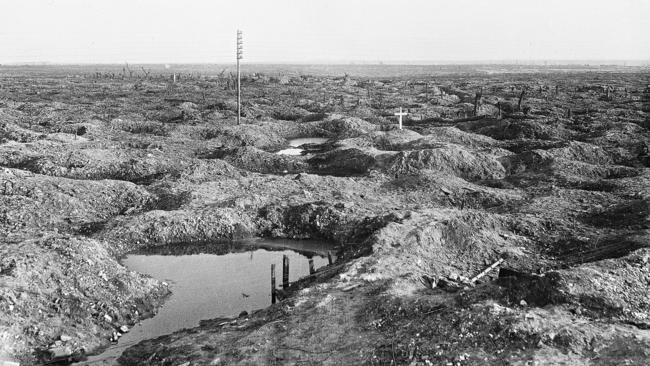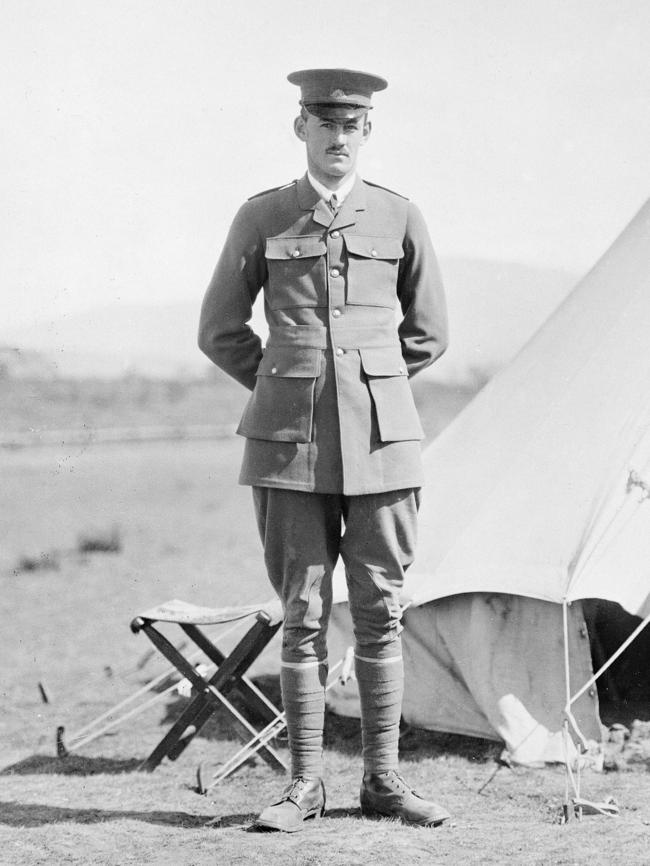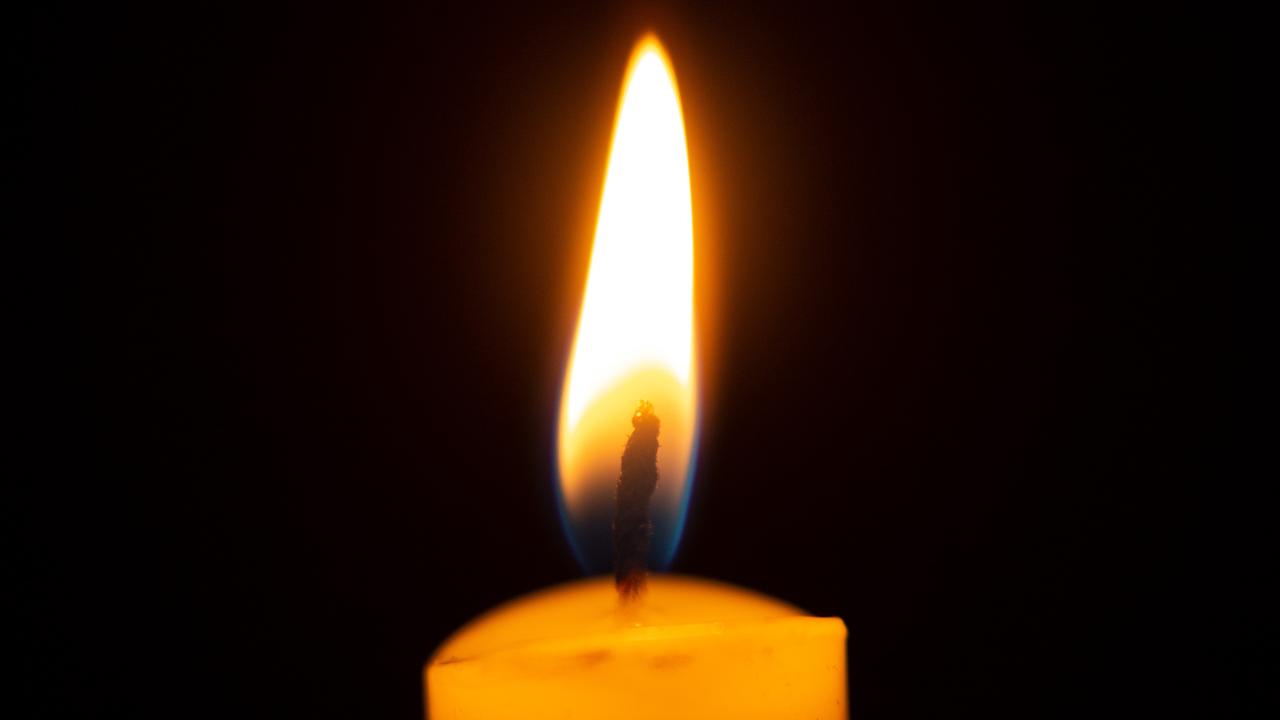World War I battlefield relic from Pozieres to be presented at Launceston ceremony
A PHOTOGRAPH conveys the WWI sacrifice made by up to 550 Tasmanians in capturing Pozieres.

ANZAC Centenary
Don't miss out on the headlines from ANZAC Centenary. Followed categories will be added to My News.
THE role that Tasmanians played in the capture of Pozieres – a small French village – from German soldiers in July 1916 may not have been Australia’s best remembered story from World War I.
But one of the war’s most iconic photographs, depicting a cratered moonscape with a small white cross in the distance, conveys the sacrifice made by up to 550 Tasmanians during one of Australia’s costliest campaigns.

Barry Gracey, president of the Pozieres Remembrance Association, said the cross marking the grave of Captain Ivor Margetts, age 24 from Wynyard, was dislodged by shellfire shortly after the photograph was taken.
According to the Australian Remembrance Trail history page, Captain Margetts led his men up the cliffs at the Sphinx, behind North Beach near Anzac Cove at dawn on April 25, 1915.
Australia’s official historian Charles Bean wrote that Capt Margetts made it through the Gallipoli campaign without injury. But his luck ran out on July 23, 1916, while preparing to lead a patrol across Pozieres’ main street to start clearing the already captured northeastern end of the village.
“Margetts did not return and the news soon spread that he ... had been killed by a chance shell,” wrote Bean.
“Margetts asked to be pulled down into shelter from shellfire and, knowing his hurt was mortal, told his helpers to ‘look after the boys’.”
Capt Margetts was an early casualty of German shellfire, which started falling on the captured village from the morning of July 24, 1916.
Pozieres was seen as the key to controlling the high ground and the Germans were determined to destroy the Australians by bombardment, turning all their available guns on Pozieres.
EDITORIAL: ONE SELFLESS SACRIFICE; A LIFE CALLED TO MIND
According to historian Sir Basil Henry Liddell Hart, the 12th Battalion’s [Tasmania and Western Australia] leadership came under heavy criticism for “impetuous desire for quick results” and “lack of thought” seen as a contributor to high casualty rates. Soon afterwards Australian troops voted overwhelmingly against conscription.
Mr Gracey said: “To compound the loss for Australia, 4112 men were never found or identified after the battle and still lie in the fields of Pozieres.’’
Mr Gracey will attend a ceremony in Launceston on September 3 to honour about 550-600 Tasmanians killed at Pozieres, “at the request of the Mayor of Pozieres”.
“He [the Mayor] wishes me to present a bayonet found on the battlefields to the citizens of Tasmania in memory of the men who died at Pozieres,” he said.
Read more on the push to commemorate the battle at Pozieres in today’s Mercury.
Originally published as World War I battlefield relic from Pozieres to be presented at Launceston ceremony


